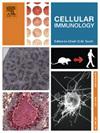综合蛋白质组学和磷酸化蛋白质组学分析两种不同类型巨噬细胞激活的动态信号网络
IF 2.9
4区 医学
Q2 CELL BIOLOGY
引用次数: 0
摘要
巨噬细胞在抗微生物宿主防御中起着至关重要的作用,具有不同成熟/分化状态的巨噬细胞在炎症反应中存在差异。本研究利用体外建立的巨噬细胞模型GM- csf和M- csf引物小鼠骨髓源性巨噬细胞(GM- bmdms, GM和M- bmdms, M),利用4D无标记蛋白质组学和磷酸化蛋白质组学分析其在革兰氏阴性菌成分LPS处理下的动态信号变化。LPS刺激后,GM和M巨噬细胞内或细胞间的蛋白变化保持相对恒定,而磷酸化蛋白则表现出更多样化和短暂性的变化。早期诱导磷酸化介导的GTPase活性、mRNA加工和蛋白质介导的代谢变化,如氧化磷酸化(OXPHOS)/线粒体功能,在1小时后被鉴定出来,并维持到LPS处理后6小时,而典型的TLR介导的myd88依赖性和非依赖性途径在3和6小时分别在蛋白质水平上被激活。磷酸化蛋白质组学还检测了MyD88和TRIF信号通路的经典和新型磷酸化位点。综合而言,进行了蛋白质和磷酸化蛋白的综合趋势分析,并给出了GM和M早期肌动蛋白重组、吞噬和TLR信号传导的核心蛋白质-磷酸化蛋白网络。综上所述,这些数据描述了这两种巨噬细胞在对LPS的炎症反应方面的异同。本文章由计算机程序翻译,如有差异,请以英文原文为准。
Integrated proteomics and phosphoproteomics profiling dynamic signaling networks underlying two distinct types of macrophage activation
Macrophages play a crucial role in antimicrobial host defense and those with differential maturation/differentiation status differ in inflammatory responses. Herein, GM-CSF and M-CSF primed mouse bone marrow derived macrophages (GM-BMDMs, GM and M-BMDMs, M), the well-established macrophage models in vitro, were utilized and their dynamic signaling changes in response to gram-negative bacteria component LPS treatment were analyzed using both 4D label-free proteomics and phosphoproteomics. Protein changes maintained relatively constant within or across GM and M macrophages post LPS challenge while phospho-protein exhibited more diverse and transient changes. Early induction of phospho-mediated GTPase activities, mRNA processing, and protein-mediated metabolic changes like oxidative phosphorylation (OXPHOS)/mitochondria function was identified at 1 h and maintained until 6 h post LPS treatment in GM and M while canonical TLR mediated MyD88-dependent and -independent pathways were activated at 3 and 6 h, individually at protein levels. Classical and novel phospho-sites for MyD88 and TRIF signaling pathways were also detected by phosphoproteomics. Comprehensively, the integrated protein and phospho-protein trend analysis was conducted and the core protein-phospho-protein network for the early phase actin reorganization, phagocytosis, and TLR signaling in both GM and M were presented. Taken together, these data described differences and similarities between these two types of macrophages in terms of their inflammatory responses to LPS.
求助全文
通过发布文献求助,成功后即可免费获取论文全文。
去求助
来源期刊

Cellular immunology
生物-免疫学
CiteScore
8.20
自引率
2.30%
发文量
102
审稿时长
30 days
期刊介绍:
Cellular Immunology publishes original investigations concerned with the immunological activities of cells in experimental or clinical situations. The scope of the journal encompasses the broad area of in vitro and in vivo studies of cellular immune responses. Purely clinical descriptive studies are not considered.
Research Areas include:
• Antigen receptor sites
• Autoimmunity
• Delayed-type hypersensitivity or cellular immunity
• Immunologic deficiency states and their reconstitution
• Immunologic surveillance and tumor immunity
• Immunomodulation
• Immunotherapy
• Lymphokines and cytokines
• Nonantibody immunity
• Parasite immunology
• Resistance to intracellular microbial and viral infection
• Thymus and lymphocyte immunobiology
• Transplantation immunology
• Tumor immunity.
 求助内容:
求助内容: 应助结果提醒方式:
应助结果提醒方式:


